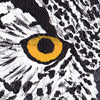Editing .duf textures and importing textures
 gray22fox-2131101
Posts: 0
gray22fox-2131101
Posts: 0
Switching to DAZ 4.6, I'm not sure how to edit texture files when they are in .duf format. I used to just open the texture maps in Photoshop, edit them, and save them into a new file. Because .duf is a custom file format I'm not sure what to do.
So far, my work around has been exporting a figure with textures as a .obj, then editing the exported maps in Photoshop. How should I import the edited texture files back into DAZ 3D? Or is there a better workaround?
Thank you for the help!


Comments
DUF is a plain text format, and the JPG files used as textures are listed inside it in the usual way. If you try to edit a DUF file, and it looks like gobbledegook, then it is in compressed format, and you need to either use WinZip or WinRAR or 7Zip to open it, or it can be done from inside DAZ Studio as well I believe (I use WinRAR).
It is just the same as using a DSA or even a PZ2 file, just protect your original textures as usual.
DUF files don't actually store textures, they merely reference them. That's why the Runtime\Textures folder is used by the majority of products and changes to the textures therein will affect any loaded DUF file which uses them. If you want to edit the texture, there's an easy way to find where it is stored.
Load the file into Daz Studio and then select the surface with the texture you want to edit. Under Surfaces -> Editor look for the Diffuse Color and click on the swatch to the left of the colour. This will bring up the list of textures currently associated with your scene. Click 'Browse' and the folder will default to the location of the currently used texture. You can then open this up in Photoshop or your editor of choice and make any required changes.
Thank you! I figured it out by your comments :)
You can also uncompress the DUF file in order to find out where the texture is that belongs to that DUF file.
To do that choose menu "Window --> Panes (Tabs) --> Batch Convert", click "Add files" and load that DUF file you want the texture from. At the bottom of that dialog window choose "Uncompress..." and click "Apply". That's why they are all compressed. Anyway, use any text editor to go through the text and look for .jpg files. One of them should be the texture you're looking for. You can actually leave the DUF file that way. It will still work. But the file size can be easily 10-50 times as big. So in the end you might want to compress the DUF file again.